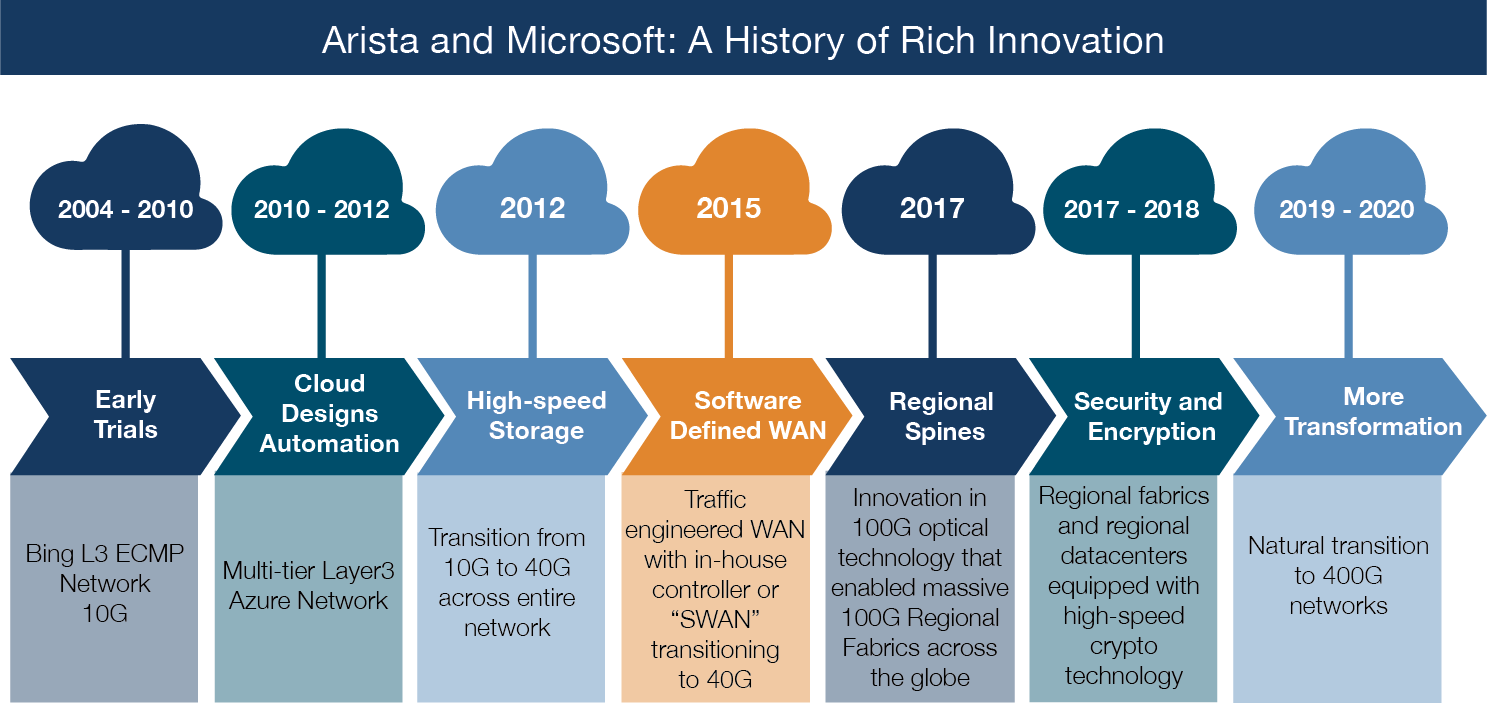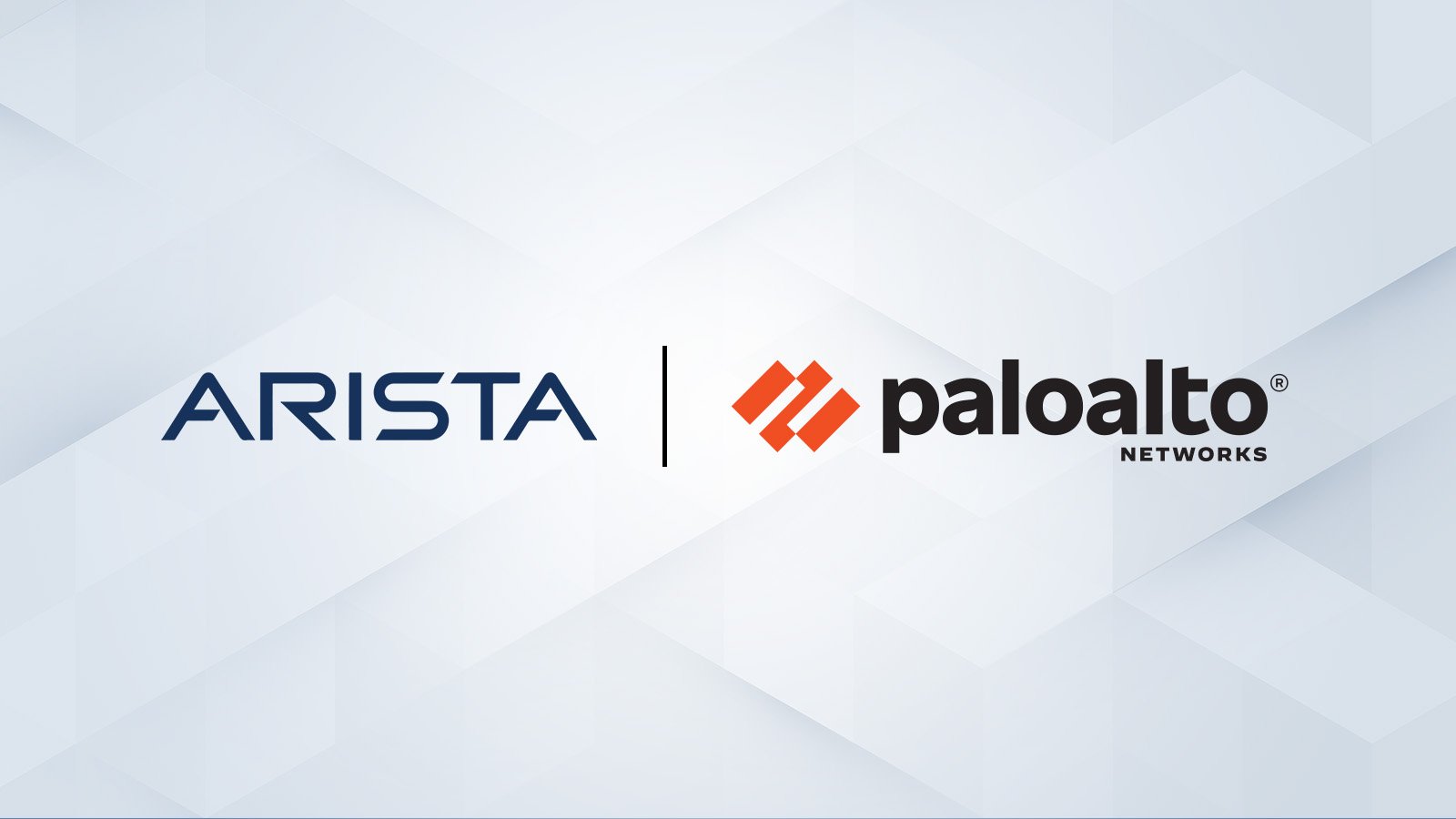Delivering Reliable AI and Cloud Networking
The explosive growth of generative AI and the demands of massive-scale cloud architectures have fundamentally redefined data center networking...

As we celebrate the 5thAnniversary of Arista’s IPO this week at NYSE, we pause to reflect on this key milestone. Arista’s results are a tribute to the customers who chose us, appreciated our innovative technology and stood by us through our highs and lows. One key customer who played a pivotal part in the decade was Microsoft. Microsoft coincidentally was destined to be a part of our journey since 2008 when we were searching for a new name for our company. Our top choice was Azure, but the domain name was taken just a few weeks before we started our naming effort. Since then, Microsoft redefined the public cloud with Azure and Arista has become a critical foundation to enabling the scale, reach, reliability, and performance that have become synonymous with the Azure cloud.
Challenge the Status Quo
Microsoft was looking to disrupt the status quo of networking at the time when legacy vendors were lacking density, consuming excessive power and bottlenecked with oversubscribed performance. The thought leaders at Microsoft began to take a serious look at merchant silicon performance/scale and extensible software for their cloud networking journey. Azure’s challenge was to scale their architecture by breaking down the traditional confines of a Layer-2 network. It became clear that the only way to make Azure a hyperscale network was to use Layer-3 at cloud scale. The traditional enterprise routing protocol at the time, OSPF, would not be a good fit for dense multipath of n-way connected ECMP uplinks, because link state changes were propagated across the entire area, so BGP, capable of operating at Internet scale, was deployed as both IGP and EGP.
Leading merchant silicon from Broadcom, coupled with Arista’s hardware engineering and system design created the first n-way Spine for east west traffic. Arista delivered the 7500 Series Spine that changed the face of cloud networking forever evolving from 10G to 40G to 100G, and now 400G, the latest generation of Ethernet, is delivered at scale in the same platform.
The Spine not only switched at Layer-2 but addressed Layer-3 scaling challenges. Top engineers at both Arista and Microsoft worked diligently to optimize the network addressing and routing architecture to align with the system capabilities in the best way possible. This was a significant enabler for large volumes of data. By 2014, Microsoft and Arista powered one of the world’s largest storage networks in the cloud.

SWANS for Elegance
Cloud networking benefits greatly from an intelligent edge requiring full Internet routing for both scale and reliability. This has pushed the boundaries of merchant silicon to carefully and surgically traffic engineer flows across a global inter-datacenter network. The “Software WAN”, or SWAN network brought SDN (Software Defined Networking) from academic theory to practical application. SWAN was then able to take advantage of Arista EOS to build an elegant WAN evolving to support 100G, 200G as well as DWDM interconnections at Internet peering points around the world.
Regional Spines drive 100G
In 2016, the arrival of 100G single-chip switching architectures brought the technologies that enabled Azure to create large regional fabrics across long distances. Networks were no more just based on server and storage connectivity alone but could span optically and bring transit data encryption capabilities at scale. Azure customers could now take comfort in knowing that all traffic leaving an Azure datacenter would be encrypted with strong cryptography should the traffic be intercepted. Future 400G systems are expected to build upon the high-performance regional networks in 2020 and beyond.
Redefining Enterprise Edge
The next epoch of computing is beginning –defined by the expansion of the Internet, building of the cloud that we explained above and enabling AI/ML, connecting IoT devices by the billions, extending the reach of broadband networking with 5G, and extending the enterprise with Hybrid Cloud.
Hybrid Cloud is perhaps the most complex and network intensive cloud architecture, requiring a new set of capabilities and functions to be delivered to improve the end user and operator experience in this, a most challenging, environment.Delivering the Hybrid Cloud for modern enterprise means that the business is never locked in, and IT and business leaders together can make the best decision for that particular business about what applications run where, at what pricing and support model - sometimes on-premises bare metal, sometimes VMs in a datacenter, other times cloud native functions in the Azure cloud, and sometimes serverless web apps interacting with cloud capabilities - all without making tradeoffs on identity, policy, controls, connectivity, portability.
The Decade Ahead
Arista and Microsoft are working together to enable the Hybrid Cloud for the Enterprise, to enable past, present, and future requirements in the most efficient and reliable manner. The journey to a Hybrid Cloud environment starts now with Cloud Area Networking – building the globally connected and elastic networking foundation that supports seamless interconnection of an organization’s assets: whether they are in public clouds, or on-premises, spanning a building or spanning continents.
Our journey doesn’t end with connectivity. It begins with elastic delivery of the networking software stack which has just begun! Together we are excited to forge ahead redefining the new enterprise for the 2020 century. Welcome to the new world of software driven cloud area networking!
I always welcome your comments at: info@arista.com
Reference:
Press Release

The explosive growth of generative AI and the demands of massive-scale cloud architectures have fundamentally redefined data center networking...
/Images%20(Marketing%20Only)/Blog/VESPA-Launch-Blog.jpg)
The modern enterprise is navigating a profound transformation. The shift to the 'all wireless office' and 'coffee shop type networking', fueled by...

Data centers have evolved into highly distributed, hybrid ecosystems that span private clouds, public clouds, and colocation facilities. This...